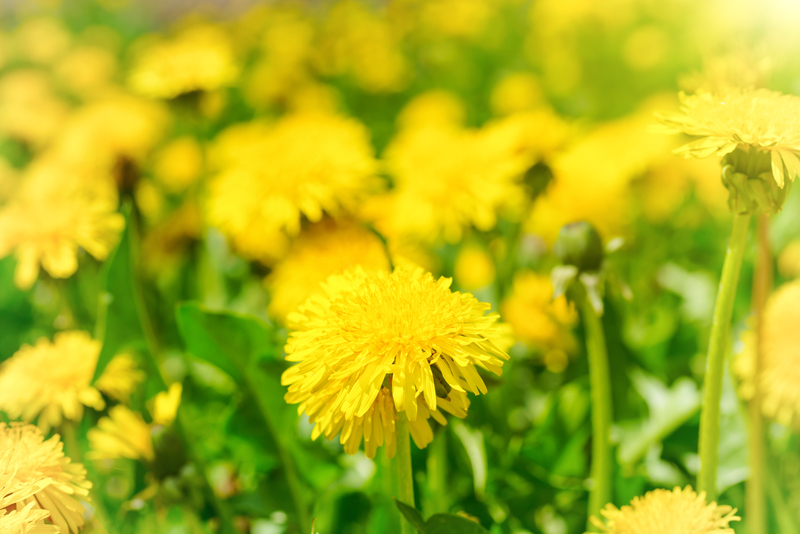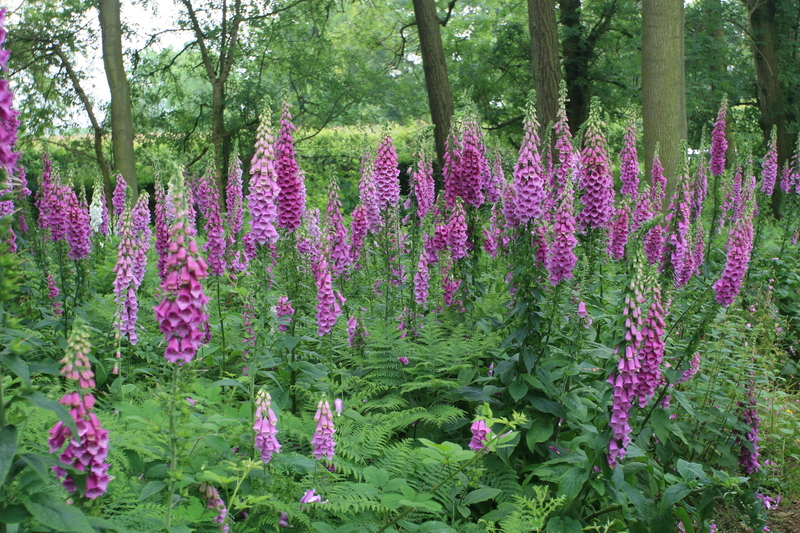Revitalize Your Outdoor Space with 3 Weed Control Tips
Posted on 10/06/2025
Revitalize Your Outdoor Space with 3 Weed Control Tips
Unwanted weeds can tarnish the beauty of any outdoor oasis. Discover how effective weed management can transform your garden, yard, or patio, making it more inviting and easier to maintain. In this comprehensive guide, we'll explore three practical weed control tips that will help you achieve a lush, weed-free environment. From natural solutions to smart maintenance strategies, read on and learn how to revitalize your outdoor space while keeping pesky weeds at bay!
Why Weed Control is Essential for a Beautiful Outdoor Space
Weeds aren't just a cosmetic issue--they actively compete with your lawn and garden plants for precious nutrients, sunlight, and water. Left unchecked, these invaders can:
- Stunt the growth of your favorite plants and flowers
- Attract pests and diseases to your garden
- Devalue the aesthetics of your outdoor living space
- Increase maintenance needs and long-term costs
Effective weed control helps restore the lush, vibrant look of your landscape and gives you more time to relax and enjoy your outdoor retreat. Let's dive into three essential weed control tips you can start applying today.

Weed Control Tip #1: Use Mulch Effectively
What is Mulch?
Mulch is any material--organic or inorganic--spread over soil to act as a barrier between the earth and the air. Common types include wood chips, straw, compost, gravel, and even rubber pellets. Mulching is one of the most effective and environmentally friendly weed prevention methods.
How Does Mulch Help Control Weeds?
- Suppresses Weed Growth: A thick mulch layer blocks sunlight, preventing weed seeds from germinating and growing.
- Improves Soil Health: Organic mulches (like shredded bark or compost) break down over time, enriching your soil and promoting healthy plants that crowd out weeds naturally.
- Retains Moisture: Mulch keeps soil moist, reducing the risk of dry, weed-prone areas.
Best Practices for Mulching
- Apply a 2-3 inch layer of mulch around plants, shrubs, and flowerbeds for optimal weed control.
- Leave space around plant stems to prevent rot and improve air circulation.
- Replenish mulch yearly or as needed for continuous protection.
- Choose the right mulch for your landscape: wood chips for flower beds, straw for vegetable gardens, or gravel for pathways.
Tip: Landscape fabric beneath your mulch can offer an extra layer of weed prevention--but be mindful of drainage needs and avoid plastic materials that suffocate soil.
Weed Control Tip #2: Maintain Healthy Lawn and Plant Beds
Weeds thrive in unhealthy, thin, or poorly maintained lawns and garden beds. To minimize weed invasion and revitalize your outdoor space, focus on building robust, dense plantings that outcompete opportunistic weeds.
Steps to a Healthy, Weed-Free Lawn
- Mow High: Set your mower blade at the highest recommended height for your grass species. Taller grass shades the soil, discouraging weed germination and growth.
- Fertilize Regularly: Use a balanced fertilizer during the growing season to feed your turf, making it thick and lush--leaving less room for weeds to take root.
- Water Deeply, But Infrequently: Instead of frequent, shallow watering, give your lawn a deep soak. This encourages grass roots to grow deep and strong, outcompeting most weeds.
- Overseed Bare Spots: Quickly fill in any bare or thin patches to deny weeds a foothold.
Garden Bed Tactics for Weed Suppression
- Plant densely: Cluster your ornamentals or vegetables so that as they mature, their leaves create a living mulch, shading out weed seedlings.
- Add groundcovers: Low-growing, spreading plants cover bare soil effectively, keeping weeds in check year-round.
- Edge regularly: Maintain clean, well-defined borders between your lawn, beds, and pathways with a spade or edging tool--this keeps aggressive lawn weeds from encroaching on garden beds.
Remember: Healthy plants make for fewer weeds. By investing in soil health and proper maintenance, you'll create a resilient, attractive landscape with less effort spent pulling or spraying weeds.
Weed Control Tip #3: Apply Targeted Hand Weeding and Smart Herbicide Use
When & How to Hand Weed
Sometimes, nothing beats the satisfaction and precision of hand weeding. It's especially effective if you catch weeds early or target invasive perennials that resist other methods.
- Weed when soil is moist--after rain or watering--for easier root removal.
- Grasp low on the weed stem and gently pull to remove the root system intact. A dandelion fork or weeding tool can help dislodge deeper roots.
- Dispose of uprooted weeds away from your compost if they've already gone to seed, to avoid future infestations.
- Schedule regular sessions--weekly or biweekly walks through your yard with a bucket and tool will keep new weeds from taking over.
Choosing the Right Herbicide
For persistent or large-scale outbreaks, or in hard-to-reach spots like driveway cracks and fence lines, commercial herbicides can be effective--but use with care and precision to protect your desirable plants and the environment.
- Pre-emergent herbicides: Apply these products to soil before weeds sprout to create a barrier that prevents germination. Ideal for lawns in early spring or late fall.
- Post-emergent herbicides: Use these after weeds have appeared. Choose selective formulas for lawns (which target only broadleaf weeds) and non-selective options for paths, patios, or driveway cracks.
- Organic weed killers: Vinegar-based sprays or products containing essential oils can work on young weeds, though repeated applications may be necessary.
Pro Tip: Always read and follow the label instructions. Avoid using herbicides on windy days. Spot-treat only where necessary to minimize environmental impact.
Additional Tips to Enhance Your Outdoor Space
Preventative Measures
- Inspect new plants for hitchhikers like weed seeds or roots before planting.
- Keep compost piles hot and turn them regularly to kill weed seeds.
- Install pathway or bed edging barriers to prevent encroachment from surrounding grassy areas.
Consistent Maintenance
- Routine inspections help you catch and manage weeds while they're small and easier to remove.
- Seasonal clean-ups (especially in spring and fall) prevent overwintering weeds and keep beds tidy.
Go Native for Long-Term Success
Native plants and adapted groundcovers require less water, fertilizer, and maintenance. They're typically more resistant to pests and outcompete weeds--making your outdoor space naturally more resilient and vibrant.

Frequently Asked Questions about Weed Control
1. What is the safest way to control weeds around pets or children?
Use non-toxic methods such as hand pulling, mulching, and dense planting. For severe areas, select organic herbicides or physical barriers instead of chemical sprays to keep your family and pets safe.
2. How often should mulch be applied for weed prevention?
Reapply mulch annually, or whenever you notice it has broken down to less than 2 inches deep. This maintains a strong barrier and keeps weeds from popping through.
3. Can weeds ever be beneficial?
Some weeds add organic matter, attract pollinators, or indicate soil conditions--but most common garden weeds should be managed to prevent them from taking over and disrupting your landscaping goals.
Conclusion: Transform Your Garden with Smart Weed Management
With these three proven weed control strategies--mulching, maintaining healthy plantings, and targeted weeding/spot treatment--you can reclaim the beauty, health, and enjoyment of your outdoor environment. Consistent care paired with the right approach will revitalize your outdoor space in no time, giving your garden the lush, weed-free vibrancy you desire.
Start putting these weed control tips into action today and rediscover the pleasure of a beautiful, inviting outdoor sanctuary--all season long!
Want More Gardening Insights?
For more landscaping and gardening advice, check out our latest articles on lawn care, plant selection, and seasonal maintenance strategies to keep your outdoor space thriving year-round.

